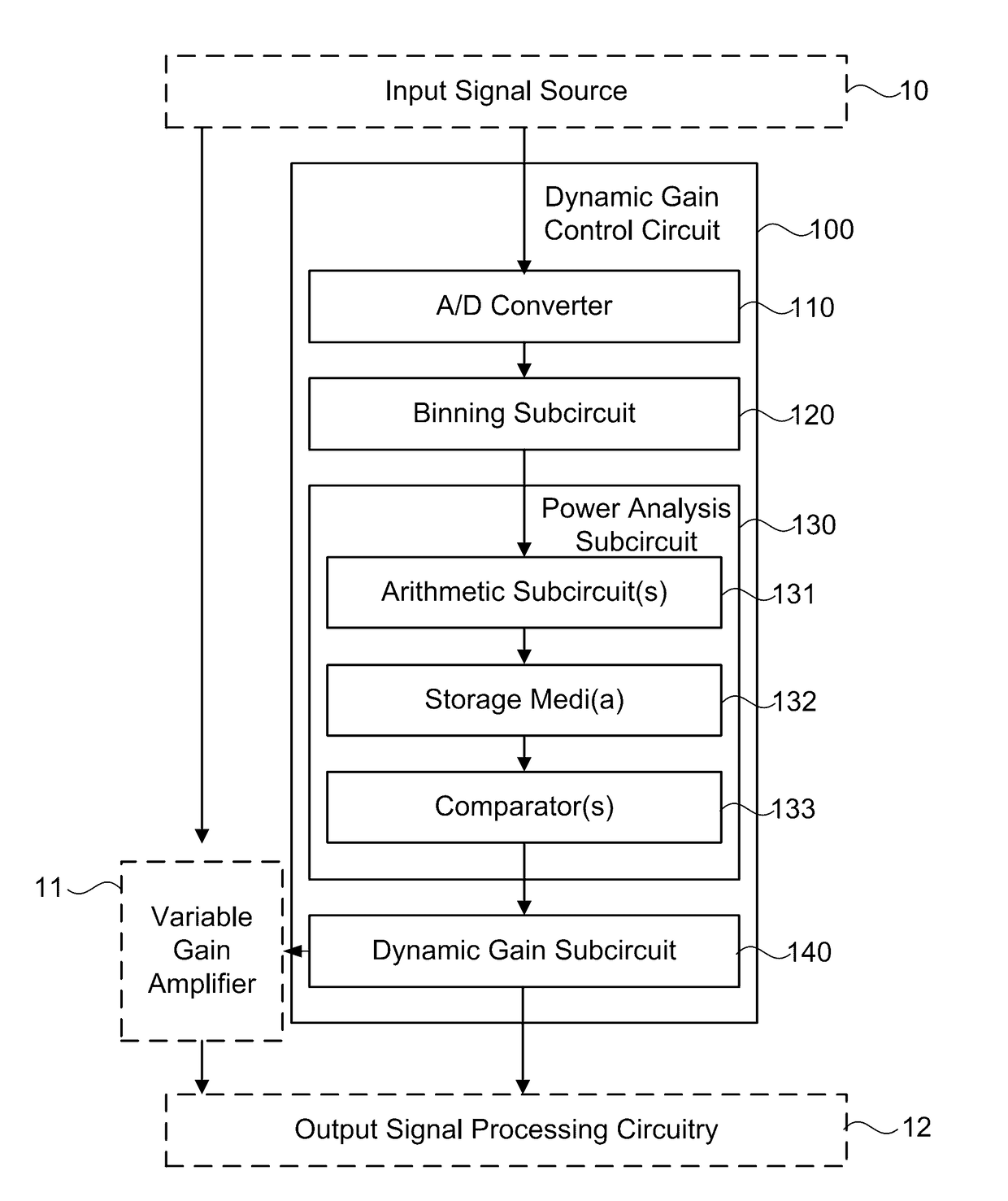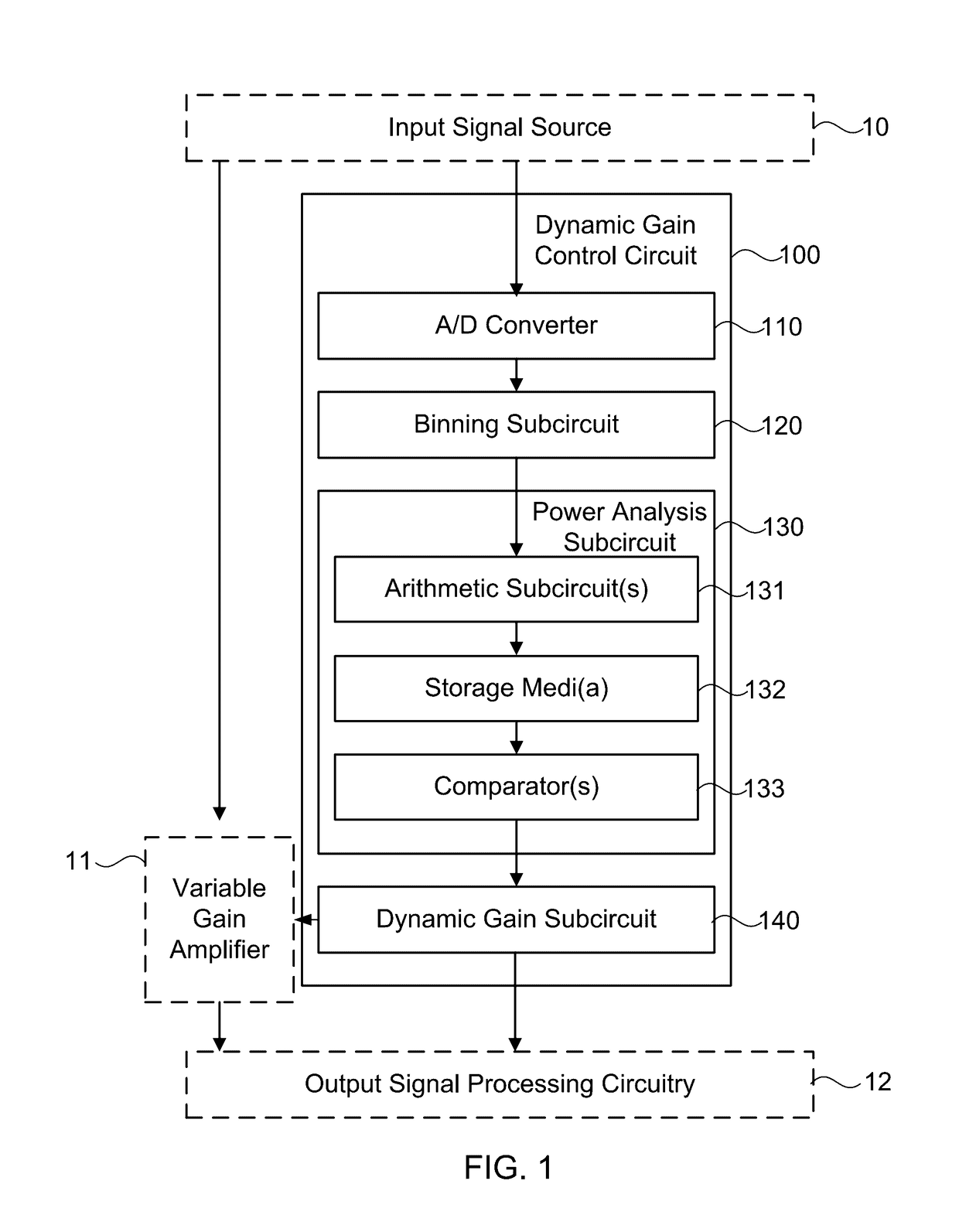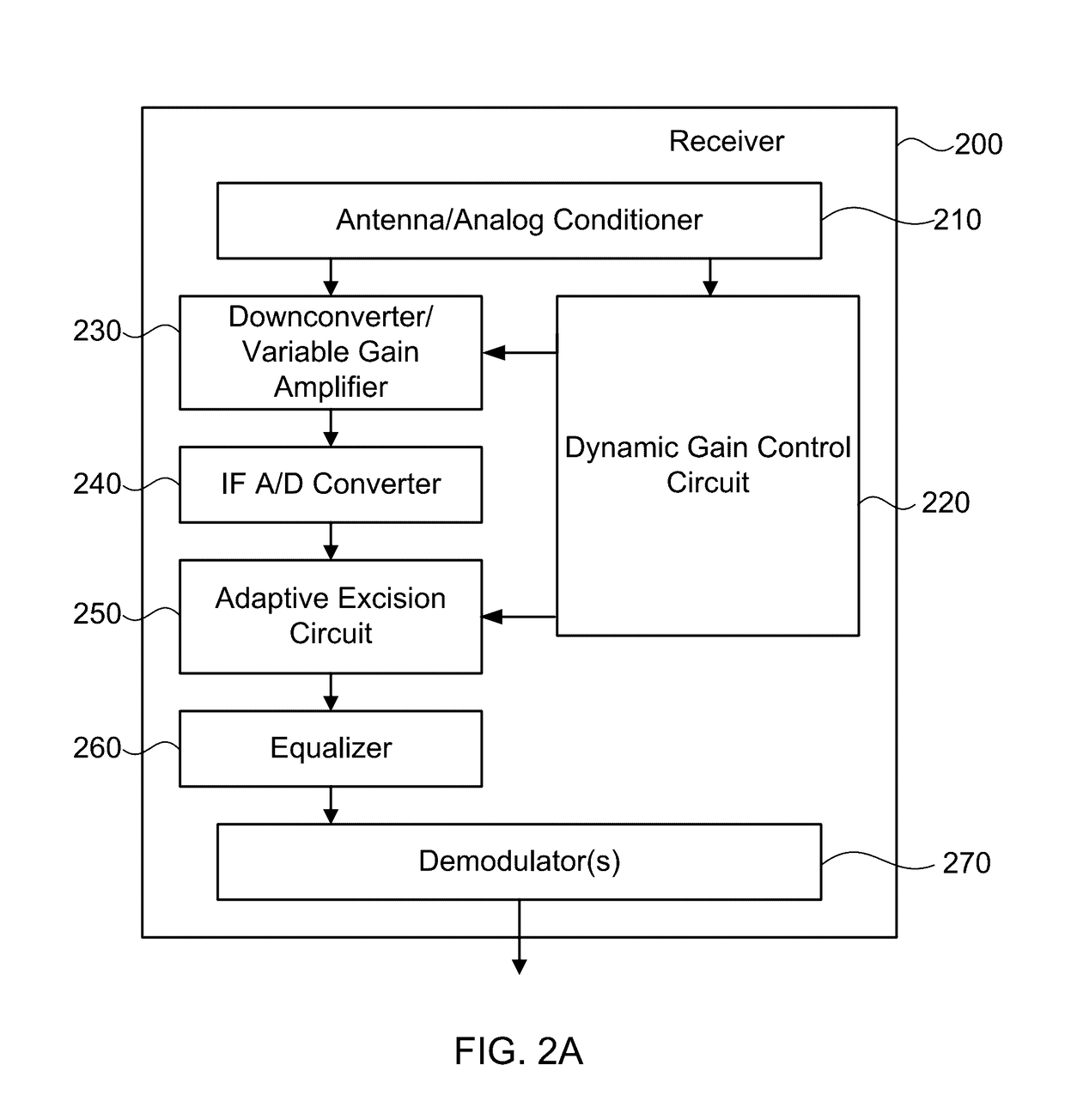Circuits and methods for reducing interference that spectrally overlaps a desired signal based on dynamic gain control and/or equalization
a technology of dynamic gain control and equalization, applied in the direction of orthogonal multiplex, multiplex communication, amplifier modification to reduce non-linear distortion, etc., can solve the problems of reducing the effectiveness of adversaries, distorted received signal collection, and sensitive satellite signals received by user terminals. , to achieve the effect of reducing interference, reducing interference, and reducing interferen
- Summary
- Abstract
- Description
- Claims
- Application Information
AI Technical Summary
Benefits of technology
Problems solved by technology
Method used
Image
Examples
examples
[0085]The following examples are intended to be purely illustrative, and not limiting.
[0086]Potential performance characteristics of the present circuits and methods were characterized by using MATLAB (MathWorks, Natick, Mass.) to simulate receiver systems such as illustrated in FIG. 5 and as described herein with reference to FIGS. 1 and 2A-2B. MATLAB was used to simulate a transmitter such as illustrated in FIG. 5 that included a random integer generator block, integer to bit converter block, convolutional encoder block, bit to integer converter block, quadrature phase shift keying (QPSK) modulator at baseband block, and raised cosine transmit filter block to generate a convolution coded signal. Additive white Gaussian noise (AWGN) and an interference signal were added to the convolution coded input signal and provided as input to a receiver that included blocks for DGC, excision, and equalization, which blocks could be used in any desired combination with one another. The DGC blo...
PUM
 Login to View More
Login to View More Abstract
Description
Claims
Application Information
 Login to View More
Login to View More - R&D
- Intellectual Property
- Life Sciences
- Materials
- Tech Scout
- Unparalleled Data Quality
- Higher Quality Content
- 60% Fewer Hallucinations
Browse by: Latest US Patents, China's latest patents, Technical Efficacy Thesaurus, Application Domain, Technology Topic, Popular Technical Reports.
© 2025 PatSnap. All rights reserved.Legal|Privacy policy|Modern Slavery Act Transparency Statement|Sitemap|About US| Contact US: help@patsnap.com



